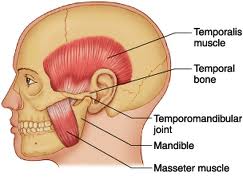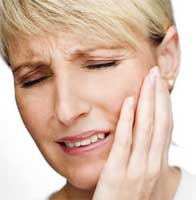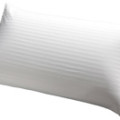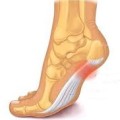Do you have jaw pain, neck pain, frequent headaches, limited mouth opening or pain with chewing? You could be one of the 3 million people suffering from TMD, temporomandibular disorder.
What is TMD?
Temporomandibular disorder is pain or limited motion in the TMJ (temporomandibular joint) commonly known as the jaw joint. TMD includes problems with the muscles of the jaw and neck (myalgia), the disc of the joint, and the joint itself (arthralgia). The symptoms of TMD include pain in the jaw with chewing and/or talking, limited opening, inability to close completely, locking when open or closed, ringing or fullness in the ear, headaches, and neck pain. You can have one or all of these symptoms. TMD is more commonly diagnosed in women between the ages of 20-40 and affects up to 33% of people within their lifetime. It can affect one or both sides of your jaw. Generally, pain is usually occasional and temporary.

What causes TMD?
TMD can be caused by may factors including nocturnal bruxism (night grinding), poor posture, prolonged mouth opening (such as a long dental procedure), arthritis, trauma/whiplash, disc displacement, and/or stress.
How is TMD diagnosed?
TMD is diagnosed with a thorough medical history and presentation of symptoms. The diagnosis does NOT require any expensive tests or x-rays. Unfortunately, many people are misdiagnosed for years leading to depression and the feeling that “it’s in my head.” I have had patients that have seen multiple PCPs, ENTs, and neurologists before coming to seek physical therapy treatment. (Not to mention all the expensive testing and mouth aides!) This is unfortunate considering the diagnosis and treatment are so simple. So, if you think you may be suffering from TMD, try the self treatments below or contact your local therapist that is experienced in treating TMD.
What are the treatments for TMD?
The National Institute of Health (NIH) states that less is best when treating TMD. Be weary of a physician or specialist that says they need to change your bite or perform intrusive treatments, as the NIH also states you should avoid any treatments that cause changes in the bite or jaw and surgical treatment, when possible. There are many steps suffers can take on their own to relieve their symptoms:
- Practice proper posture throughout the day: sit up straight in your chair with your shoulders back and ears aligned over your shoulders. You can place colored notes around your home or office to remind you to sit up properly. Wear reading glasses when needed to avoid straining your neck to read.
- Maintain your head in an upright position when talking on the telephone. If needed invest in a headset or use the speakerphone.
- Remember to assume the resting jaw position: teeth slightly apart, tongue relaxed, and lips together. Your lower teeth should never touch your upper teeth, except when eating and there is a bolus of food between them.
- Avoid daytime clenching. A clenching cessation program has proven to be very effective to stop clenching. To do this monitor your day and notice if you are clenching, then continue on subsequent days rewarding yourself when you are not clenching (paying special attention to the times/activities you previously noted.)
- Decrease the detrimental effects of night grinding. A hard acrylic mouthpiece fit to your bite has been proven to be the most effective.
- Learn to stifle your yaws. You can place your fist under your chin to prevent excessive opening.
- Avoiding parafunctional activities: biting your nails, pencils, lower lip, etc
- Eat softer foods. Cook your vegetables, cut apples/pears/bananas into smaller bites. Avoid bagels, popcorn, corn on the cob, large bites, and chewy meat (steak).
- Chew on both sides of your mouth. If this is difficult, try chewing one fork full on the right and the next on the left.
- If you use gum as a breath freshener, chew it for a minute or two and then spit it out!
- Avoid sleeping on your stomach. When sleeping on your back or side be sure your lower jaw is not being pressed into the pillow or your hands.
- Be sure not to rest you lower jaw on your hands or cup your chin.
- Learn to control your stress levels. There are many stress relaxation techniques available, try some and see what works best for you.
- Attempt internal massage to the masseter muscle. Place the thumb of the hand on the opposite side of the pain inside your mouth against your cheek. Gently stretch and massage that area. Do not cause increased pain!
- Place heat or ice on the outside of the joint for 10-15 minutes for pain relief.
Jaw Pain! Is it TMD? – Final Thoughts
Most people will experience some relief of pain within 1 week! If you try these self-treatments and are still in pain, physical therapy can be a conservative option for managing pain. Be sure to search for a physical therapist that is experienced in treating the TMJ. The therapist can add manual techniques including muscle releases, joint mobilizations, and soft tissue massage as well as modalities such as ultrasound, electrical stimulation, and heat/ice.



